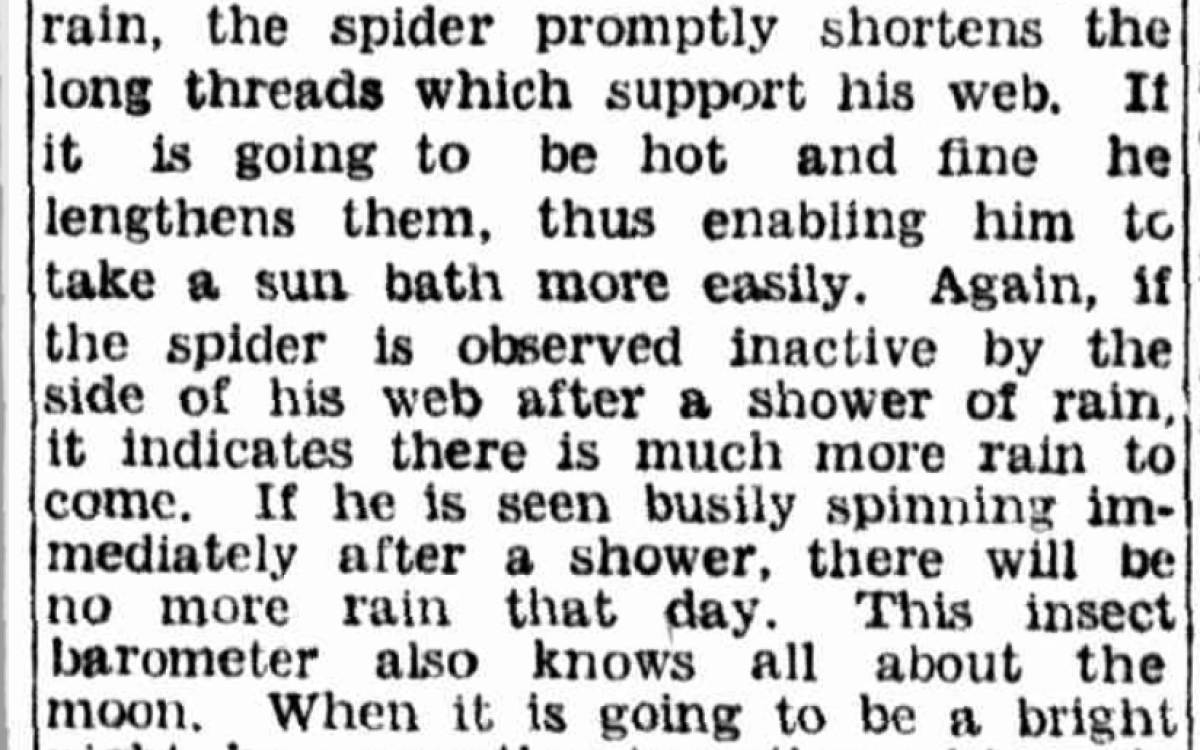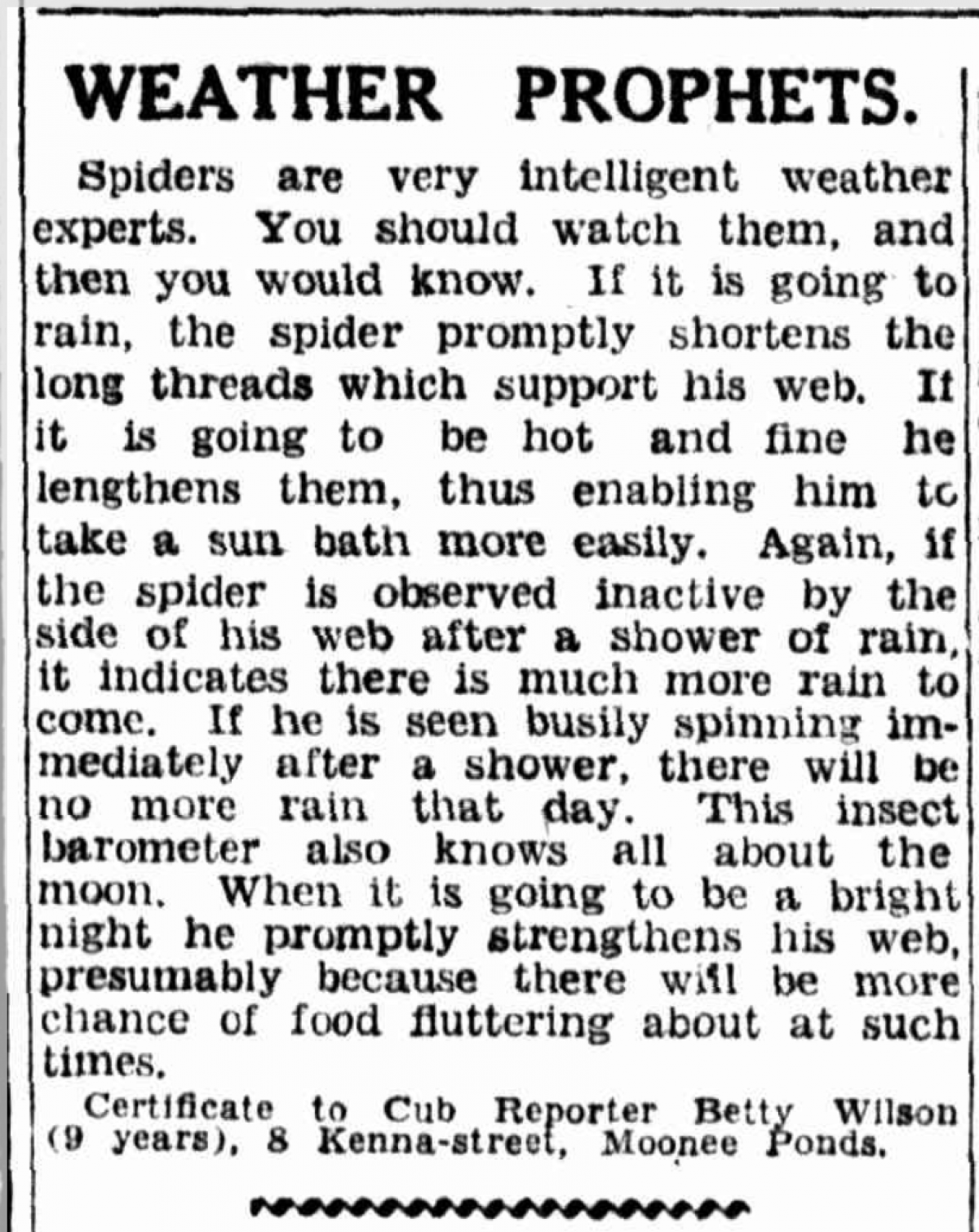
WEATHER PROPHETS. (1937, November 4). The Age (Melbourne, Vic. : 1854 - 1954), p. 17. http://nla.gov.au/nla.news-article205560442
As cub reporter Betty Wilson (aged nine in 1937) tells us, forecasting the weather is not all about maps and laboratory science!
Animals, birds and plants provide great indicators of weather changes on the way. For centuries, people have looked to nature to indicate the oncoming weather.
When a storm is on the way, bees return to their hives. Cows lie down when humidity rises as air pressure drops when a storm is coming. Frogs will croak loudly to attract a mate when rain is on the way because the water creates the right environment for eggs and tadpole production. Sharks will swim to deeper parts of the ocean for safety when the air pressure drops as a cyclone or storm gathers. The same air pressure drop is sensed by seabirds that fly low over the ocean and the land. Birds shelter in trees to wait out the storm. Seaweed is dry and brittle in low humidity, but supple when humidity levels are high.
Activities
You’re a Natural
Read the article (pictured) with your students and plan an experiment similar to Betty’s.
For example, to predict when rain is coming, place a pinecone on an outside window ledge.
- Record when the pinecone opens up and when it closes and what the weather was like at each change.
- Leave the pinecone on the windowsill for a week or longer to see how accurate it is at predicting the weather.
Create a class wall chart recording the results of your experiments
Folklore
Select a series of sayings related to predicting the weather, for example:
- lightning never strikes twice
- kookaburras laugh when it’s going to rain
- breezes bring on sneezes
- frogs croaking in a lagoon, rain will come soon
- clear moon, frost soon
- rainbow in the morning, sailors warning; rainbow at night, sailors delight
- smelly drains mean teeming rains
- dew on the grass, no rain will pass
- clouds shaped like rocks and towers mean we’ll be beset by showers
- a ring around the sun or moon means rain will be coming soon
- red sky at night, shepherds’ delight; red sky in the morning, shepherds’ warning.
Have students decide whether these sayings are true or false. They might then create a poster or brochure showing graphically a selection of reliable natural ways to predict the weather.
